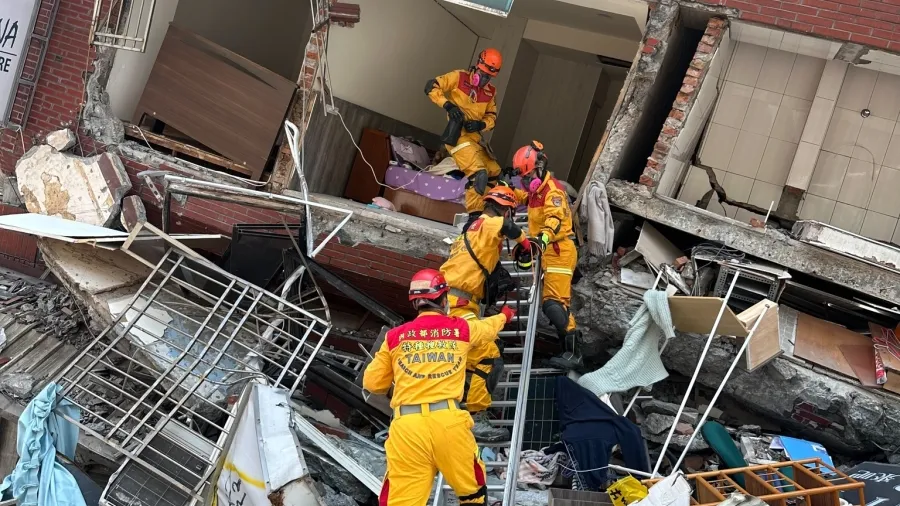
Taiwan’s property insurance to spike after 7.4 quake spurs millions in losses
Taiwan's general insurance industry's profitability isn't likely to be significantly affected.
Taiwan’s biggest earthquake in 25 years is estimated to cost millions of dollars in losses and claims, according to various analyses.
On 3 April, a series of strong earthquakes rattled eastern Taiwan, causing significant damage and disruption. The largest quake, measuring 7.4 magnitude with a depth of 34.8 km, struck at 7:58 a.m. local time near Hualien city. This was followed by nearly 30 powerful aftershocks, including a 6.4 magnitude quake 13 minutes later, detailed CoreLogic.
“Insurable losses from the April 3 Mw 7.4 earthquake will be between $5.0b and $8.0b. The losses include ground shaking and fire-following damage to only residential, commercial, industrial, and agricultural properties in Taiwan. They do not include any damage to government buildings and transportation infrastructure such as bridges or roads. Demand surge is included,” said Jon Schneyer director of catastrophe response at CoreLogic.
Similarly, Aon indicated in their weekly cat report that total economic losses may reach hundreds of millions USD. The high takeup rates for residential earthquake insurance, facilitated by the Taiwan Residential Earthquake Insurance Fund (TREIF), are expected to make it a significant event for the local insurance industry, with a nearly 40% take-up rate since 2002.
Hualien County is expected to bear the brunt of the damage, while Taipei's strong building codes mitigated significant destruction.
Taiwan's history of seismic activity underscores the importance of its robust building codes, though disparities exist between modern and older structures. The country has continuously updated its seismic codes, primarily relying on reinforced concrete for construction.
Whilst earthquakes are common in Taiwan, the region has experienced devastating events in the past. However, initial reports indicate that the impact of the April 3 earthquake may not be as severe as previous disasters. Significant damage and travel disruptions have been reported in eastern Taiwan, particularly in Hualien County, affecting buildings, infrastructure, and transportation networks.
ALSO READ: Taiwan's insurance sector profits reach $1.8b
Over 13 million people experienced strong shaking, including Taipei City, with over 8 million residents. More than 3 million felt very strong or severe shaking.
As of April 5, Taiwan’s National Fire Agency (NFA) reported 10 fatalities and over 1,100 injuries, with expectations of a rising death toll and missing persons, all in Hualien County. NFA recorded over 1,150 earthquake-related incidents and 370,000 power outages.
Around 2,500 cases of damage, including 780 buildings and infrastructure, were recorded nationwide.
Approximately 430 schools reported damage, resulting in an estimated loss of $15m, mainly in Taipei, New Taipei, and Hualien counties. More stringent building codes since 1999 helped prevent severe structural damage.
Outlook
Despite causing substantial damage, especially in Hualien, insurers are expected to manage the financial impact effectively, aided by government-backed schemes, advised GlobalData.
However, insurers may reassess risk exposure and adjust premiums for profitability, says Aarti Sharma, an Insurance Analyst at GlobalData.
“Being located in one of the three major seismic regions globally, Taiwan is prone to natural calamities, especially earthquakes. As a result, the penetration of earthquake insurance is moderately high in Taiwan, and the current earthquake is expected to result in high claims for local insurers and reinsurers,” said Sharma.
Property insurance claims in 2024 are projected to reach $0.5b (TW$14.1b), with the potential for further increase as the full impact unfolds.
Despite the losses, Taiwan's general insurance industry's profitability isn't likely to be significantly affected, given the low average loss ratio of property insurance.
The TREIF is expected to absorb most of the losses, with recent increases in liability assumption limits.
In the short term, insurers may reassess risk exposure, potentially leading to increased premium rates for property insurance.
This could drive property insurance growth, with gross written premiums projected to rise from $1.7b (TW$51.8b) in 2024 to $2.2b (TW$66.8b) by 2028, at a compound annual growth rate (CAGR) of 6.5% over 2024–28.
The recent earthquake may spur greater demand for fire and natural hazard policies, particularly those covering earthquakes. Fire and natural hazard policies are expected to dominate property insurance GWP in 2024, accounting for 80.4% of the total.
“The recent earthquake could translate into higher claims than anticipated for insurers and reinsurers in Taiwan. The increased frequency of such large-scale natural calamities is expected to further create demand for the fire and natural hazard policies in the country, which will support property insurance growth over the next five years.” Sharma added.

















 Advertise
Advertise








